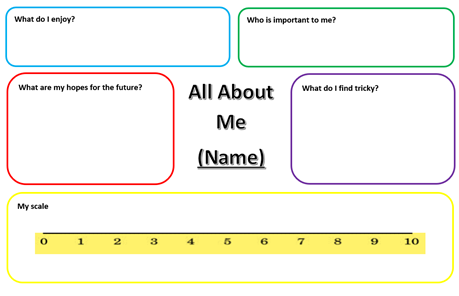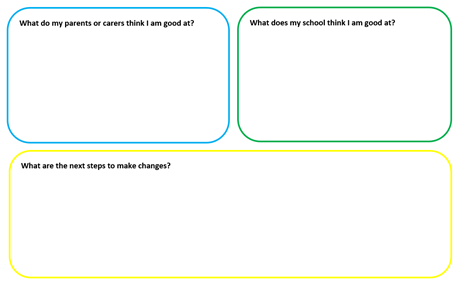By Preeya Chibbra
As a first-year trainee educational psychologist, I take a lot of inspiration from the professional community. One example of this is using one-page profiles as a way of introducing ourselves to children and young people before we begin working with them. I was interested in how these may be used in a reciprocal way. I did this by creating a summary report for a pupil in a similar format to the one-page profile, to mirror the one I had sent them. This represented the voices of the child, parent and school staff in a way that was accessible and engaging for the pupil. It also informed them of the next steps and recommendations I had made from the piece of work. Using one-page profiles in this way reflects their original purpose: to summarise important information about children and young people in a person-centred way. This is one example of how we can feedback to the children who we work with and promote their involvement.
My experience
When I had the opportunity on placement to complete direct casework, albeit virtually, I was excited to send my own profile to the school so that they could share it with the pupil before we met. I also found myself thinking, “how can we use this in a more reciprocal way?”. When reflecting on this piece of work with my placement supervisor, we discussed how to use the one-page profile to feedback to pupils within a report.
After meeting with the child, their parent and school staff, I used the one-page profile format to briefly summarise everyone’s views. I also included a short overview of the recommendations from this piece of work, so that the pupil knew what the next steps were. I aimed to keep the summary report strengths-based, and used colour and visuals to make it more engaging. I sent my full report to the parent and school, alongside the summarised report for them to share and discuss with the pupil. The pupil was happy to get their own one-page profile as a visual representation of what we had talked about when we met.
Why is this important?
Using the one-page profile in a reciprocal way to feedback to children and young people means we can check that we have understood the views they expressed. It also shows that we have listened to these views by capturing the exact phrases used by the child or young person. This can help them to feel that their contribution has been heard, valued and taken seriously into consideration – a principle specified in Article 12 of the United Nations Convention on the Rights of the Child (1989).
This also reflected conversations that were currently happening within my placement service around who we write reports for and how to make this information more accessible for all audiences. Referring to principles in the Special Educational Needs and Disability Code of Practice, it is important for educational psychologists to promote participation of children and young people in their work. Providing a report that the pupil can read could help them to feel more involved in the process.
What next?
Moving forward, I will continue to build the one-page profile into my practice to promote the involvement of the individual I am working with. It would also be interesting to hear about other ways that professionals feedback to children and young people in accessible ways. Through discussions with colleagues during my placement and at university, it is clear that educational psychologists already use a variety of methods to represent the voice of the child. This can include writing letters or postcards to the young person to summarise their involvement. However, it is also important to consider time constraints for the casework that educational psychologists undertake. Once a template has been created with the required headings, this could be a way to efficiently create a child-friendly summary report.


Preeya is a Year 1 trainee on the initial training course for educational psychologists at the University of Birmingham.

What a fantastic idea. 🙂. Also a super idea for parents who may have difficulty understanding the technical language of a professional report.